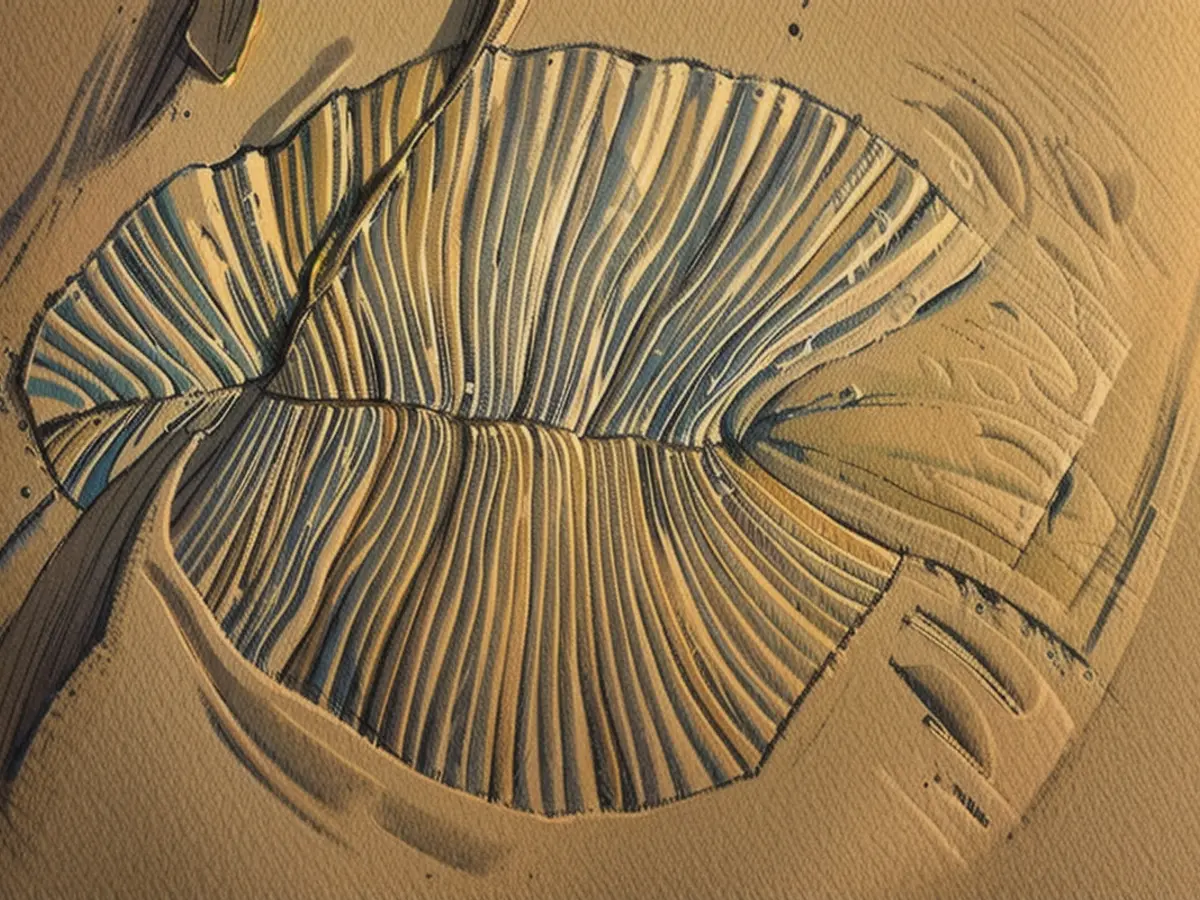591 million years ago, Earth's magnetic field nearly vanished, possibly fostering intricate life forms' growth.
Around 591 million years ago, Earth's magnetic field nearly disappeared, and this surprising event might have played a significant role in the boom of intricate life, according to recent research.
According to John Tarduno, a geophysics professor at the University of Rochester in New York and the study's senior author, the magnetic field usually protects our planet. If it hadn't existed early on, water would be gone from Earth due to the solar wind - a stream of charged solar particles.
"In the Ediacaran, we had a fascinating period in Earth's history when the processes that generate the magnetic field had become so inefficient after billions of years that the field almost collapsed entirely," he said.
In the journal Communications Earth & Environment published on May 2, a study revealed that Earth's magnetic field was considerably weaker than it is now for at least 26 million years. This discovery also resolved a geologic enigma regarding when Earth's solid inner core formed.
This era corresponds with the Ediacaran Period, when the first intricate animals emerged from the ocean and the percentage of oxygen in the sky and oceans increased.
These peculiar creatures resembled nothing like modern-day life. They included:
- Squashy fans such as Yilingia
- Tubes like Alisaurus and Dickinsonia, measuring up to 4.6 feet (1.4 meters) in size
Prior to this era, life was mostly single-celled and microscopic. The scientists think a weak magnetic field may have led to an increase in oxygen in the atmosphere, enabling early complex life to evolve.
Uncovering the almost-vanished magnetic field
The strength of Earth's magnetic field varies over time, and tiny magnetic particles locked in crystals within rocks provide a record of its intensity.
The first evidence of a dramatically weaker magnetic field during this period emerged in a 2019 study of 565 million-year-old rocks in Quebec, which revealed the field was 10 times weaker than today.
A more recent study added more proof of the field's decline, with information from 591 million-year-old Brazilian rock suggesting it was 30 times weaker than today.
While the field had become less efficient, it wasn't always this way. Rocks from South Africa, dating back over 2 billion years, preserved, show the Earth's magnetic field was as strong as it is now.
At that time, the inner parts of the Earth were still liquid, while now it's solid, which alters the way its magnetic field is developed, Tarduno explained.
"Over billions of years, this process has been getting less and less efficient," he added.
"It's almost collapsing during the Ediacarian. At the right moment, the inner core solidified, strengthening the magnetic field."
Complex life and increased oxygen

When complex life emerged during the Ediacaran Period, so did high oxygen levels. Some creatures could survive at low oxygen levels, such as sponges and microscopic animals, but larger, more complex ones that move need more oxygen.
"An increase in oxygen is traditionally attributed to photosynthetic organisms like cyanobacteria, which produce oxygen and gradually increase its levels in the water," said Shuhai Xiao, a geobiology professor at Virginia Tech and the study's co-author.
However, the new research suggested an alternative idea: A weaker magnetic field could also have raised oxygen levels. The magnetosphere defends the Earth from solar wind, which can strip lighter gases like hydrogen from our atmosphere.
"A weaker magnetosphere implies a higher loss of hydrogen from the atmosphere," Xiao said via email.
Tarduno believes multiple processes could've occurred at once. "We're not challenging that one or more of these processes were happening simultaneously. But the weak field may have helped push animal evolution over a threshold," he said.
Solving the inner core mystery
The geological analysis revealed secrets about Earth's innermost center.
Jimmy Chuhai, senior geochemist at the Carnegie Institution for Science in Washington, D.C., and a biogeochemist at Stony Brook University, agreed with the study's findings on the magnetic field's weakness but found the assertion that it could have influenced atmospheric oxygen and biological evolution more challenging to evaluate. He didn't contribute to the study.
"It's hard for me to assess the validity of this assertion because we don't fully understand how planetary magnetic fields affect climate," he added.
Tarduno stated they considered their hypothesis solid but proving a direct connection could take generations of arduous work due to our limited knowledge about the creatures that existed during that time.
Predictions regarding the moment the earth's inner core may have solidified, when iron started to crystallize at the planet's heart, fluctuated between 500 million and 2.5 billion years ago.
Recent studies on the magnitude of Earth's magnetic field imply the core developed following 565 million years ago, allowing the planet's magnetic barrier to renew its strength.
"The findings seem to corroborate the hypothesis that the inner core began forming around this period, propelling the geodynamo (the mechanism creating the magnetic field) from a weak, unstable condition into a powerful, stable dipolar field," Driscoll stated.
Although it's uncertain how the strength of the magnetic field was restored after the Ediacaran era, the development of the inner core was likely significant in averting the desiccation of the water-rich Earth.
During the Cambrian Period, however, the peculiar Ediacaran creatures had vanished. They were substituted by a surge in life diversity, where the branches of life's evolutionary tree took form rapidly.
Read also:
- This will change in December
- Dikes withstand water masses so far - Scholz holds out the prospect of help
- Fireworks and parties ring in 2024 - turn of the year overshadowed by conflicts
- Attacks on ships in the Red Sea: shipping companies avoid important trade route
Source: edition.cnn.com








